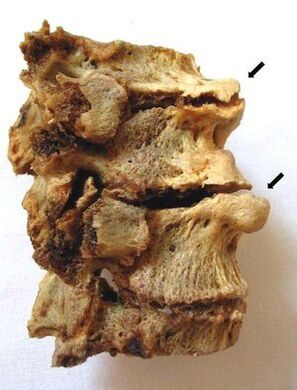
Therapy for osteochondrosis consists in eliminating symptoms and achieving stable remission. A patient with cervical, thoracic, lumbosacral pathology is hospitalized for acute back pain, usually caused by a displacement of the intervertebral disc. In all other cases, osteochondrosis is treated at home. It consists in the use of pharmacological drugs, adherence to a thrifty regime, physical education and gymnastics.
What is osteochondrosis?
Osteochondrosis is a degenerative-dystrophic pathology that rapidly progresses without medical intervention. Under the influence of negative factors, the intervertebral discs lose their ability to retain moisture. This leads to a violation of trophism, a lack of nutrients in cartilage tissue. The intervertebral discs become denser, thinner, their surface is covered with radial cracks.
They are no longer able to perform a shock-absorbing function, which leads to instability of the vertebral structures and their displacement beyond the boundaries of the vertebral canal. The vertebral bodies are also deformed - bone growths (osteophytes) form on them.
causes
Disruption of the trophic intervertebral discs occurs due to excessive physical exertion, a sedentary lifestyle. In the elderly, a pathology occurs due to the natural aging of the body - a decrease in the production of collagen, a slowdown in the processes of regeneration. The following diseases can also provoke the development of osteochondrosis:
- Autoimmune diseases - rheumatoid arthritis, systemic lupus erythematosus;
- endocrine diseases - hypothyroidism, diabetes mellitus;
- Haematopoiesis disorders, blood circulation, metabolic disorders.
Conditions for the destruction of intervertebral discs are obesity, smoking, wearing high-heeled shoes, congenital and acquired anomalies of the spinal structure.
Symptoms
At the initial stage of development, the pathology is asymptomatic. Mild aching back pain occurs after physical exertion and disappears after a short break. But over time its intensity increases. The pain is worse when bending, turning, climbing stairs. Other characteristic signs of osteochondrosis appear:
- Crunching, clicking while walking, or changing body position;
- Restriction of movement.
In the remission stage, back pain is mild. Complaints occur with hypothermia, weightlifting and changing weather.
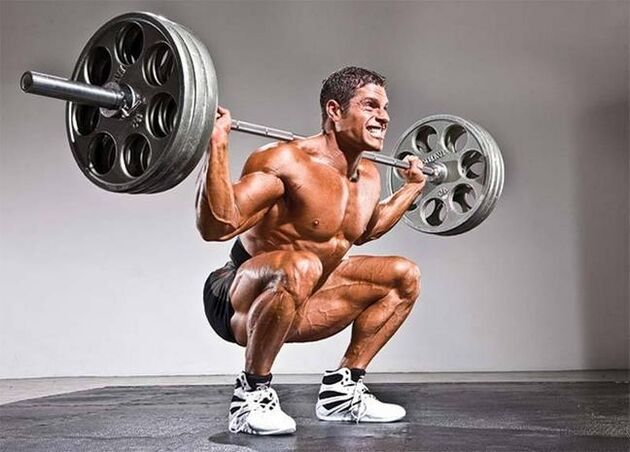
Methods of treating osteochondrosis at home
The drugs with which it would be possible to restore the damaged discs and vertebrae have not yet been synthesized. Therefore, osteochondrosis therapy aims to prevent the disease from progressing. All methods used in treatment are based on accelerating blood circulation and replenishing nutrient reserves in cartilage and bone tissue.
Wearing orthopedic aids makes the patient feel better. Shants collars are used for the pathology of the cervical spine, for thoracic and lumbar osteochondrosis - soft bandages with a warming effect or elastic corsets with rigid inserts made of plastic or metal.
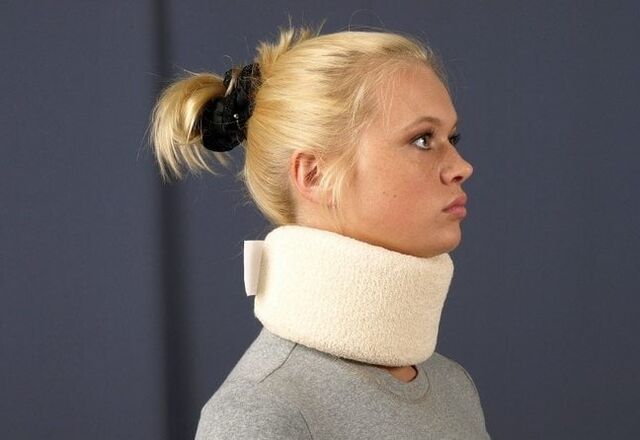
Drug therapy
The drugs of first choice in the symptomatic treatment of osteochondrosis are nonsteroidal anti-inflammatory drugs (NSAIDs). Intramuscular administration of solutions makes it possible to stop acute pain.
If the pain syndrome is not very pronounced, then taking pills can help you get rid of it.
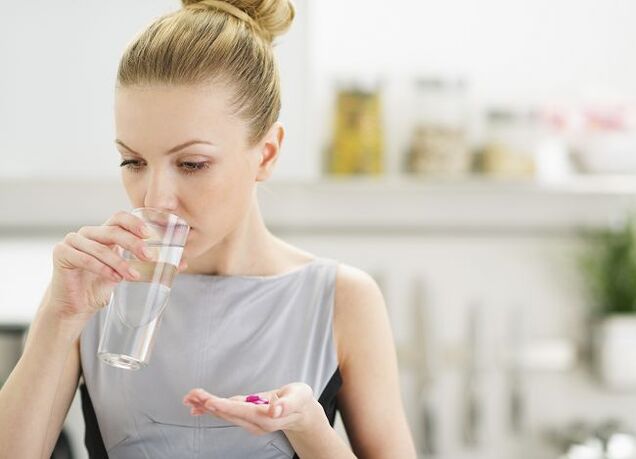
Mild discomfort is eliminated by applying gels and ointments locally.
| Drugs used to treat osteochondrosis | Therapeutic effect |
|---|---|
| Glucocorticosteroids | They relieve inflammation, have an analgesic, antiexudative and immunosuppressive effect |
| Muscle relaxants | Relaxes the skeletal muscles, eliminates the compression of spinal roots and blood vessels from muscle spasms |
| Chondroprotectors | Partly restore the cartilage tissue of the intervertebral discs, show anti-inflammatory, analgesic effects |
| Warming ointments | Irritates subcutaneous receptors, distracts a person from pain, improves blood circulation and microcirculation |
Physical therapy exercises
Receiving chondroprotectors and performing physical therapy do not have such a therapeutic effect as daily exercise therapy and gymnastics. The exercise set is developed individually for the patient by the movement therapist. In doing so, not only the localization of the pathology is taken into account, but also the physical fitness of the patient, the X-ray stage of osteochondrosis. The complex must include the following exercises:
- with damage to the cervical structures - tilts, twists, rotation of the head;
- with the defeat of the thoracic and lumbar vertebrae - tilting, turning the body, walking with high knees.
The main tasks of exercise therapy are to improve the blood flow to the tissue with nutrients, to strengthen the back muscles and to stabilize the intervertebral discs and vertebrae. However, when performing exercises, microtrauma of the vertebral structures is unacceptable. Therefore, all movements should be smooth, slightly slowed down and with a small amplitude.
Therapeutic nutrition
For any musculoskeletal pathology, nutritionists recommend limiting the use of salt and spices in the diet, which often leads to the formation of edema. Food should not be salted when cooking but when eating. From the spices, you need to choose only those that do not change the water-electrolyte balance in the body, for example, cinnamon, cardamom, dry paprika.
It is necessary to limit, and it is better to refrain from fried, smoked products, semi-finished products and fast food.

The most useful food for osteochondrosis is food that is steamed or steamed in a small amount of water. It is advisable to include in the menu of the day a little oily fish (salmon, herring) to remove cholesterol from the blood vessels.
Massage for osteochondrosis
The classic, segmental acupressure massage is used in the treatment of osteochondrosis to eliminate muscle hypertension and restore optimal blood circulation. The masseur acts on the spasmodic muscles by rubbing, caressing, vibrating, chopping movements. Neurologists recommend visiting the massage room not only for treatment, but also to prevent painful relapses.
Manual or hardware vacuum massage is also in demand. When performing medical procedures, glass, ceramic, plastic, and bamboo jars are used. They are installed at biologically active points and then move easily along the surface of the body. The combination of vacuum and mechanical action allows you to get rid of all symptoms of the disease in 5-7 sessions.
Compressed
Compression mixes are made just prior to the procedure. They are spread on the skin in a thick layer, covered with plastic wrap and a warm cloth, and the bandage is fixed with gauze or elastic bandage. If the mixture does not contain any locally irritating substances, it is left overnight. Compresses with tinctures of cinquefoil, red pepper, essential oils last about 1-2 hours.
Most often, fresh leaves of burdock, horseradish, dandelion, plantain and cabbage are used for procedures. They are crushed, mixed with a tablespoon of honey and distributed evenly on the skin. Compressed with sea salt well eliminates stiffness. A teaspoon of salt is diluted in 0. 5 cups of warm water, moistened with a sterile napkin and applied to the painful area.
Infusions and decoctions
Doctors recommend drinking at least 2. 5 liters of fluid per day for osteochondrosis. In addition to water, fruit drinks and compotes, you can use infusions of medicinal plants. To prepare a vitamin drink, put 5 dry berries of rose hip, viburnum, lingonberry, juniper, barberry in a thermos and pour 2. 5 cups of boiling water. After 3 hours, the infusion is cooled, filtered and taken in 100 ml three times a day after meals.
A decoction of cranberry leaves is also useful. Put a tablespoon of dry vegetable raw materials in a small saucepan, pour 0. 5 liters of hot water, bring to a boil. Simmer under the lid for about 10 minutes, then leave to cool. Take 3 tablespoons 2 times a day after meals.

Applications
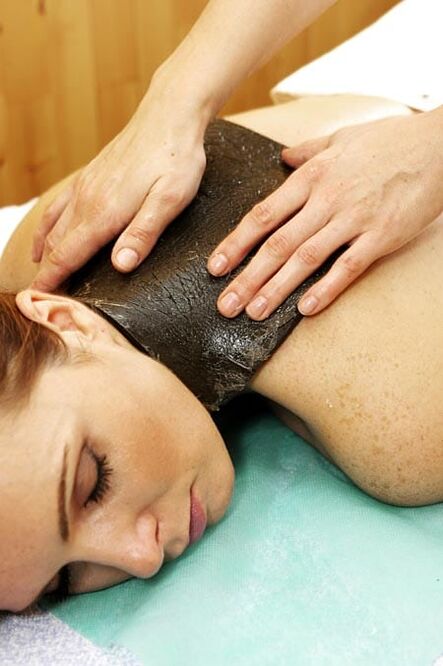
At home, you can do applications with ozokerite or paraffin - substances that store heat well. They are sold in pharmacies in the form of coarse crystalline powders. About 100 g of the free-flowing mixture are melted in a water bath at a temperature of 50-60 ° C and then cooled to 40 ° C. Take a flat wooden spatula or wide brush and apply a layer of warm mass to the skin over the affected vertebral structures. After it has dried a little, the same amount of ozokerite or paraffin is distributed. A total of 3-4 layers are applied. From above, the frozen mass is covered with a film, a thick cloth and left for 1 hour.
Rub
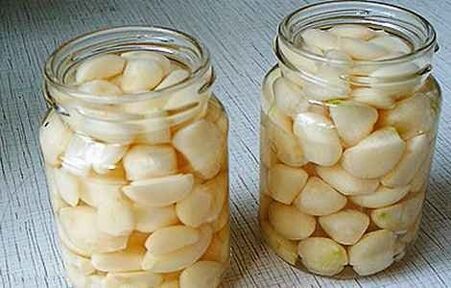
Most therapeutically effective in osteochondrosis of any localization of rubbing with a saber. In a dark glass container with a volume of 1 liter, put half a glass of crushed dry rhizomes and a glass of grass. Pour up to your throat with vodka or 96% alcohol diluted with the same amount of water. Insist in a warm place for 2-3 months, shaking the jar regularly. Do not filter, but if necessary pour in a few tablespoons of brown liquid and rub in the back for pain.
If you want, you can add a red pepper or 2-3 cloves of garlic while you insist. For people with sensitive skin, rubbing should not be prepared with vodka, but with vegetable oil.
Medicinal baths
In the treatment of osteochondrosis, salt baths are used, which have a general strengthening and toning effect on the patient's body. 200 g of sea salt are dissolved in 2 liters of hot water. The bath is filled with warm water, the concentrated solution is poured and thoroughly stirred. The duration of the procedure is no more than half an hour. Then shower and rub thoroughly with a towel.
prophylaxis
In order for the intervertebral discs not to collapse, it is necessary to exclude from the usual way of life all the factors that provoke their destruction. It is impossible to stay in one position of the body for a long time to subject the spine to excessive stress. Doctors recommend quitting smoking and replenishing your diet with fresh fruits and vegetables.

























